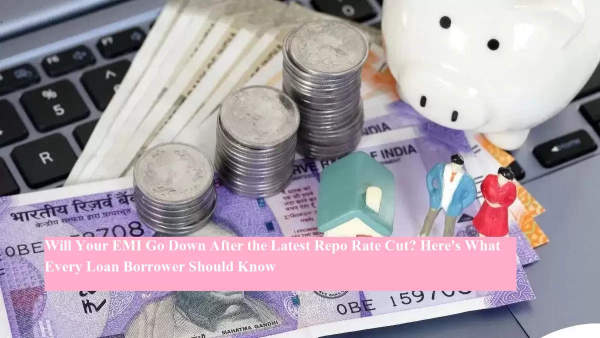
If you're planning to take a home loan or already have one, 2025 might just be your lucky year. The Reserve Bank of India (RBI) has slashed the repo rate by a total of 50 basis points (bps) in just two months—bringing it down from 6.5% to 6%. This move is expected to bring down interest rates on loans, especially those linked to external benchmarks or MCLR.
But will this really reduce your EMI? Let’s break it down.
How Repo Rate Impacts Loan EMIsThe repo rate is the rate at which RBI lends money to commercial banks. When this rate drops, it reduces the cost of borrowing for banks, who then may pass on the benefit to customers in the form of lower interest rates on loans like:
-
Home loans
-
Car loans
-
Personal loans
-
Business loans
However, how much of this benefit actually reaches you depends on how your loan is structured.
Floating Rate Loans: Big WinnersAfter October 1, 2019, most floating-rate home loans are linked to external benchmarks like:
-
RBI Repo Rate (most common)
-
Treasury Bill Yields
-
Other market-determined rates
If your loan is linked to the External Benchmark Lending Rate (EBLR) or MCLR (Marginal Cost of Lending Rate), you are more likely to see a reduction in your EMI in the coming months.
For instance, if your home loan is tied to the repo rate, then with a 50 bps cut, your interest rate and EMI could drop proportionally—depending on your lender’s reset cycle.
When Will the EMI Actually Decrease?According to RBI’s rules, interest rates on EBLR-linked loans must be reset at least once every three months. So, if your bank has not yet passed on the February 2025 rate cut, they must revise the rate by May 2025.
If you're still on older lending systems like MCLR, Base Rate, or BPLR (pre-2019 loans), you may not get the full benefit unless you switch to an EBLR-linked loan.
Borrowers with fixed interest rate loans (commonly for personal loans or short-term loans) won’t see any change in their EMI due to repo rate fluctuations. These loans are immune to short-term changes in monetary policy.
So, unless you refinance or restructure your fixed-rate loan, your EMIs will stay the same.
How Much Will You Actually Save?Let’s say you have a ₹40 lakh home loan at a floating rate of 9% for 20 years. A 0.5% drop in interest rate could reduce your EMI by around ₹1,200–1,500 per month, translating to ₹3–4 lakh in lifetime savings.
Will Banks Pass on the Full Benefit?That's the big question. While RBI has done its part, banks aren’t legally obligated to pass on the entire cut. Each lender decides how much of the repo rate reduction they want to reflect in their retail loan offerings. So far, some have responded quickly, while others are taking a cautious approach.
What Should You Do Now?-
Check if your loan is linked to EBLR or MCLR
-
If not, consider switching to an EBLR-linked loan for better rate transparency
-
Stay updated with your lender’s rate reset cycle
-
Compare loan offers from other banks—refinancing might save you a lot
-
Use online EMI calculators to estimate your new payment
With repo rate cuts totaling 50 bps in 2025, home loan borrowers—especially those on floating rates—stand to benefit. However, how much you gain depends on your loan’s structure and how proactive your bank is in passing on the benefit.
Now’s the time to review your loan terms and make informed financial decisions.









